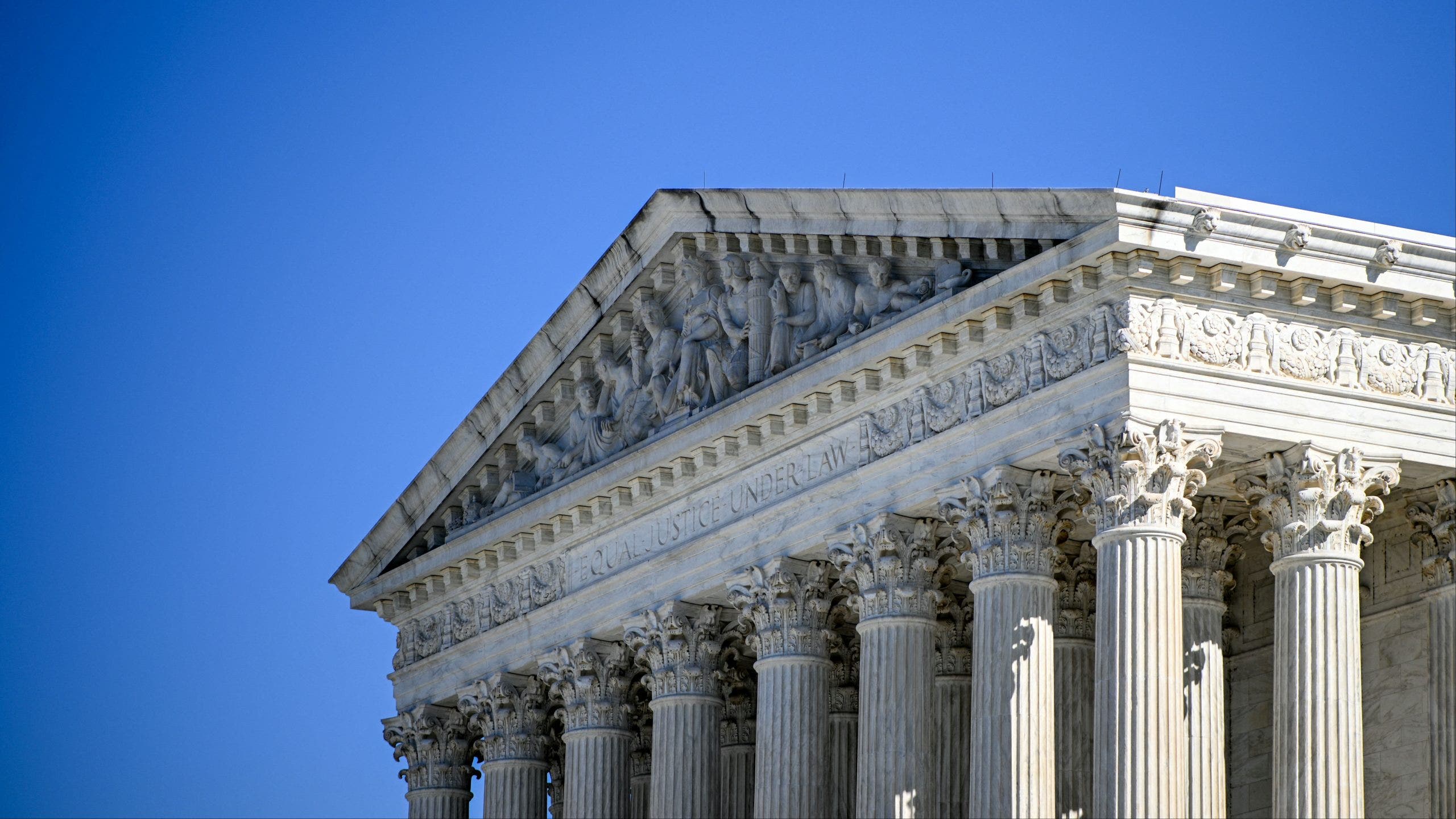Michigan
Eastern Michigan apologizes to South Alabama for player's punch that sparked brawl

YPSILANTI, Mich. — Eastern Michigan’s athletic director apologized to South Alabama on Sunday, a day after an EMU player raced onto the field after the 68 Ventures Bowl and punched an opposing player in the head, sparking a brawl.
The confrontation happened as South Alabama’s players, cheer squad and band lined up to sing the school song following a 59-10 rout of Eastern Michigan on Saturday night on its home field, Hancock Whitney Stadium in Mobile, Alabama.
An unidentified EMU played charged into the group and punched a South Alabama player in the back of the head. Another South Alabama player dragged the EMU player onto the field, sparking a free-for-all among members of both teams as smaller skirmishes also broke out.
“We strongly condemn the actions of some of the student-athletes on the EMU team in the ugly incident that took place following last night’s 68 Ventures Bowl,” Eastern Michigan athletic director Scott Wetherbee said in a statement Sunday. “We are deeply upset and embarrassed by what happened. … What happened was completely unacceptable.”
Wetherbee reiterated what EMU coach Chris Creighton said in his postgame news conference, that there is “absolutely no place for this kind of incident” in the program. He apologized to the EMU community, the South Alabama team and its fans.
Wetherbee said he had been in contact with South Alabama’s athletic director and that Creighton had reached out to Jaguars coach Kane Wommack. He also said EMU had been in contact with the Mid-American Conference commissioner and the parties will work to investigate the incident, promising appropriate actions as more information is gathered.
South Alabama AD Joel Erdmann issued a statement Sunday saying he was disappointed in the postgame conflict, but was grateful that EMU “took ownership” of the confrontation and apologized.
___
AP college football: https://apnews.com/hub/ap-top-25-college-football-poll and https://apnews.com/hub/college-football

Michigan
WATCH: Michigan State’s Coen Carr Speaks After Career Game

EAST LANSING, Mich. — Michigan State sophomore forward Coen Carr put on quite the show in the Spartans’ 86-69 victory over Florida Atlantic on Saturday.
Carr posted a career-high 17 points and also recorded eight rebounds. He had several dunks in the win and also made his first-career 3-pointer. He added a block and a steal as well.
Carr addressed the media after the game.
You can watch some of his media availability below:
Below is a partial transcript from Michigan State coach Tom Izzo’s opening statement of his postgame press conference:
Izzo: “Man, nothing’s easy. I really like that team. We said it on film. We actually did a pretty good job on a couple guys. [Baba] Miller, one. The big kid inside got in some foul trouble, did a decent job with him. I thought Jeremy [Fears Jr. ] did a hell of a job on [Leland] Walker. I really like Walker, too. But Miller is a good player. We did not do a good job on [Tre] Carroll. He was really good. And I think he is really good. I think that team has a chance to win a lot of games. This will probably be a good test for us. It wasn’t good when you’re going home for Christmas, because there was a couple sleepless nights on these guys. I told some of you I thought they were good. And yet, we started out the second half 4-of-17. Missed a gazillion layups — putbacks for Szymon [Zapala] and Jax [Jaxon Kohler], of all people. And they really — 4-of-17, I don’t know how we. I’m trying to figure out how we scored 86 points. But again, we shot pretty well from the free throw line. We offensive rebounded, we didn’t turn it over too much. I mean, it was a good win for us; I didn’t like the way it was played at all the time. I thought we got stagnant with the ball. But I was really impressed with Jeremy. And Coen [Carr] will probably never shoot another 3, so he can leave the history of Michigan State — it will be 100%. … I appreciate our fans appreciating him. And you saw our players. Last time I saw an eruption like that was when Steven [Izzo] hit a shot. That was pretty cool. I think that tells you a lot about how they feel about each other. And that was really important to me and, I think, to our coaching staff. So, Coen, no doubt, was the star of the game. Jaden came around the second half and did some good things.”
Don’t forget to follow the official Spartan Nation Page on Facebook Spartan Nation WHEN YOU CLICK RIGHT HERE, and be a part of our vibrant community group Go Green Go White as well WHEN YOU CLICK RIGHT HERE.
Michigan
Michigan State Sophomore Turns in Career Game Against FAU

Sophomore guard Coen Carr delivered a breakout performance for Michigan State basketball in its 86-69 victory over Florida Atlantic, scoring a career-high 17 points while pulling down eight rebounds. It was a game that showcased Carr’s developing offensive game and his continued growth as a versatile and impactful player for the Spartans.
Carr’s 17-point effort was the result of a well-rounded offensive game that included a variety of scoring methods. While Carr has long been known for his athleticism and ability to contribute on the defensive end, this game highlighted his increasing ability to make an impact on offense. Perhaps the most notable moment came when he hit his first career 3-pointer, a smooth shot from beyond the arc that not only earned him a standing ovation but also signaled his expanding skill set.
Up until that point, Carr had been more known for his athletic ability and transition play, but this 3-pointer showed that he is working to develop a more complete game, which will be crucial for Michigan State’s offensive versatility going forward.
In addition to his scoring, Carr’s 8 rebounds were crucial in helping Michigan State dominate the glass. His length, athleticism, and motor allowed him to clean up missed shots and secure key offensive and defensive boards. His presence on the boards allowed the Spartans to control the pace of the game, pushing the tempo and limiting FAU’s second-chance opportunities. Carr’s ability to contribute in multiple areas — particularly on the boards — shows his increasing comfort with his role on the team and his willingness to contribute wherever needed.
Carr’s all-around performance demonstrated his potential to become a more significant part of Michigan State’s rotation as the season progresses. His confidence on offense, particularly with the three-point shot, gives the Spartans another weapon to rely on. Meanwhile, his ability to impact the game with his rebounding and defensive play remains one of his strongest assets.
For Michigan State, Carr’s career-high outing is a promising sign of what’s to come. With his athleticism and improving offensive game, Carr has the potential to grow into a key contributor for the Spartans, providing them with much-needed depth and versatility as they look to make a run in the NCAA tournament. This performance against FAU is just the beginning for Coen Carr, and it suggests that he could play a pivotal role in Michigan State’s success this season.
Don’t forget to follow the official Spartan Nation Page on Facebook Spartan Nation WHEN YOU CLICK RIGHT HERE, and be a part of our vibrant community group Go Green Go White as well WHEN YOU CLICK RIGHT HERE.
Michigan
Ohio State football instant opinions: Why didn’t Buckeyes use this offense vs Michigan?
Well, well, well. Look what happens when Ohio State does what it does best – gets the ball to its pass catchers.
Saturday’s 42-17 win against Tennessee in a first-round playoff game in an energized Horseshoe – thanks to a home crowd that drowned out the exceptionally large turnout of Vols fans – was in reverse of what happened against Michigan last month. Instead of running it up the gut over and over and over, Ohio State coach Ryan Day and play caller Chip Kelly went with what works.
The No. 8-seeded Buckeyes went in with a pass-first game plan, and guess what? It worked.
Duh.
Now it’s on to the Rose Bowl for a rematch against No. 1 seed Oregon. If Ohio State plays like it did Saturday, the Ducks, who defeated OSU 32-31 Oct. 12, will be in for a fight.
Where was this Ohio State offense against Michigan (or anyone else)?
Here’s a novel idea: Get the ball to your playmakers and get out of the way. Who woulda thought it?
Repeat after me, “Wide receivers are the strength of OSU’s offense.”
But for some reason, the offensive play calling against Michigan went against that strength. The neighbor’s dog could have, and probably did, scream at the TV, “Stop running the ball up the middle.” But the Buckeyes kept trying to pound the rock, and UM made them pay.
And let’s be honest, it wasn’t just Michigan. Ryan Day and offensive coordinator Chip Kelly hesitated to go all-in on the “pass to set up the run” philosophy all season, and an offense that was supposed to be out of this world did not leave orbit as often as it should have.
Then lift-off happened Saturday against Tennessee, when Day and Kelly finally went airborne. Result: a 21-0 lead after one quarter that gave OSU enough cushion that ultimately became a comfy sofa.
The Buckeyes showed their hand out of the gate, throwing on four of their first five plays and scoring on their opening series for the first time since the Oregon game.
No team can abandon the run completely, but when your offensive line is a patchwork product, it behooves you to play to your strengths. And Day finally did.
It took being shamed and embarrassed by Michigan to become the Ohio State offense everyone thought it would be.
Ohio State defense is the real deal
OK, enough about the offensive face lift.
The defense never needed plastic surgery in the first place. Talk all you want about Jeremiah Smith, Emeka Egbuka and the sexier side of the ball, but for my money the defense deserves MVP for the season. It again was stellar against the Vols, recording four sacks and generally making life miserable for a UT offense that came in ranked eighth nationally in scoring offense (37.3-point average) and ninth in rushing offense (232 yards). The Buckeyes limited the Vols to 17 points and 152 yards on the ground.
Memo to Ohio State QB Will Howard: Don’t throw interceptions
I know, I know, easier said than done. But still it should not be that hard to avoid when you have wide receivers like OSU does. All Howard has to do is let Egbuka and Smith make plays. And preferably relatively easy plays. Howard did that on two perfect passes to Smith; a 37-yard strike in the first quarter and a 22-yarder in the third quarter that made it 28-10.
But he forced a pass to Smith in the first half that Tennessee defensive back Will Brooks picked off at the back of the end zone, ruining a scoring chance that could have made it 28-0, or 24-0 with a field goal. The risky pass simply was unnecessary, given the score.
The momentum shift led to Tennessee pulling to within 21-10 at halftime, with the Vols getting the ball to begin the second half. But Howard redeemed himself with the beautifully-thrown ball to Smith early in the third quarter.
Howard otherwise played a heck of a game, finishing 24 of 29 for 311 yards and two touchdowns. This was the QB who can take OSU all the way. That said, maybe it’s nitpicking to point out a potential game-changing interception, but when OSU’s receivers are this good, there is no reason to make easy plays more difficult.
Knoxville North as Tennessee fans invaded Ohio Stadium
Whether due to Ohio State season ticket holders reselling their seats to Tennessee fans or Vols Nation gaining access to a promo code that allowed UT fans to buy up more than their 3,500-seat allotment, there was a lot of orange in the Horseshoe. Estimates had the crowd breakdown as 65% OSU fans, 35% UT fans, but regardless of the exact numbers it almost certainly was the largest attendance for a visiting fan base in stadium history.
Many Ohio State fans watching at home were not happy with the large Tennessee turnout, but there was a bright side to Ticketgate. The smaller OSU crowd was louder than when the Shoe is clothed in 90% scarlet and gray.
What gives? My guess is those Ohio State fans who sold their tickets on the secondary market are the same ones who sit on their hands during games. Replacing them with loud and proud Buckeyes fans made a big difference.
My suggestion for OSU athletic director Ross Bjork is to configure future fan seating so that those who actually care about making noise get some type of preferential treatment. Challenging, I know, given that big-money donors want the prime real estate between the 50s. But if you really want to change the atmosphere, then do what it takes to change it.
Along those lines, the playoff opener felt more like a college football game than a minor-league baseball game, thanks in part to the College Football Playoff people taking over game-ops from Ohio State. There were fewer in-game announcements on the video boards and fewer on-field presentations. Refreshing.
roller@dispatch.com
Get more Ohio State football news by listening to our podcasts
-

 Politics1 week ago
Politics1 week agoCanadian premier threatens to cut off energy imports to US if Trump imposes tariff on country
-
/cdn.vox-cdn.com/uploads/chorus_asset/file/25789444/1258459915.jpg)
/cdn.vox-cdn.com/uploads/chorus_asset/file/25789444/1258459915.jpg) Technology1 week ago
Technology1 week agoOpenAI cofounder Ilya Sutskever says the way AI is built is about to change
-

 Politics1 week ago
Politics1 week agoU.S. Supreme Court will decide if oil industry may sue to block California's zero-emissions goal
-
/cdn.vox-cdn.com/uploads/chorus_asset/file/25546252/STK169_Mark_Zuckerburg_CVIRGINIA_D.jpg)
/cdn.vox-cdn.com/uploads/chorus_asset/file/25546252/STK169_Mark_Zuckerburg_CVIRGINIA_D.jpg) Technology1 week ago
Technology1 week agoMeta asks the US government to block OpenAI’s switch to a for-profit
-

 Business7 days ago
Business7 days agoFreddie Freeman's World Series walk-off grand slam baseball sells at auction for $1.56 million
-
/cdn.vox-cdn.com/uploads/chorus_asset/file/23951353/STK043_VRG_Illo_N_Barclay_3_Meta.jpg)
/cdn.vox-cdn.com/uploads/chorus_asset/file/23951353/STK043_VRG_Illo_N_Barclay_3_Meta.jpg) Technology7 days ago
Technology7 days agoMeta’s Instagram boss: who posted something matters more in the AI age
-
News1 week ago
East’s wintry mix could make travel dicey. And yes, that was a tornado in Calif.
-
/cdn.vox-cdn.com/uploads/chorus_asset/file/24924653/236780_Google_AntiTrust_Trial_Custom_Art_CVirginia__0003_1.png)
/cdn.vox-cdn.com/uploads/chorus_asset/file/24924653/236780_Google_AntiTrust_Trial_Custom_Art_CVirginia__0003_1.png) Technology1 day ago
Technology1 day agoGoogle’s counteroffer to the government trying to break it up is unbundling Android apps

















